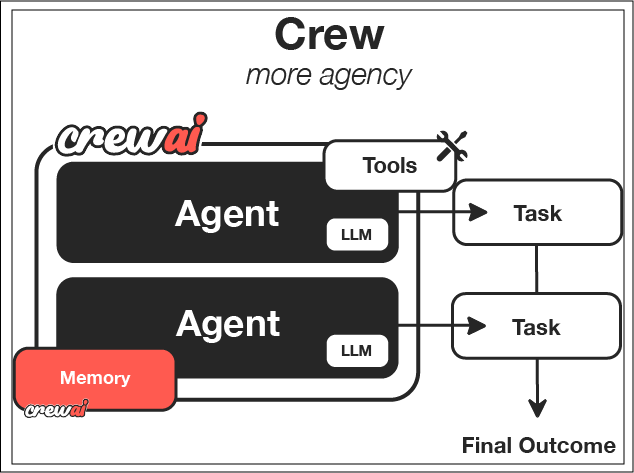Demystifying Data Insights Using AI Agents From CrewAI
The start of Artificial intelligence is rooted in the desire to mimic the functioning and functionality of the human brain. Developing machines that can function and make decisions without human intervention was the start of AI, and today, models have advanced and can perform complex tasks from interpreting brain scans to generating content (images, audio, and video), and even passing the Turing Test.
Of these modern AI technologies, Agentic AI is particularly intriguing, with their “technology imitates life” approach. Agentic AI has the ability to perceive, reason, act, learn, and have the capacity to work with minimal human intervention. It harnesses the power of Generative AI, using Large Language Models (LLMs) to understand and respond to inputs. It also uses external tools such as LLM and Google Search API calls. Rather than focusing on creating content based on prompts, as LLMs do, agentic AI uses LLMs to generate outputs for specific goals autonomously. For example, a prompt to ChatGPT (an LLM) about planning a trip will get you an itinerary and booking links, but an agent can book your transportation and hotels too.
Multiagent systems consist of multiple AI agents that work together to perform a particular task or set of tasks. Each agent within a system has a specific task to perform that leads to a global desired result. Agents in a system function the way members of a team are supposed to. For example, in a team doing a computer networks project, one member will be in charge of researching the TCP protocol, while the other will be looking up UDP, and another will be putting together the presentation. As their research field is constrained, they can each learn thoroughly about their respective topics, pool their knowledge, and finally put it together as required.
CrewAI is a Python framework that allows users to build multiagent systems. It has several easy-to-use building blocks that allow the user to focus on designing the workflow. CrewAI consists of Crew, Agents, Tasks, and Process. A crew is the top-level of organization and manages the agents, tasks, and oversees workflows. The agents are defined with specific roles that contribute to the end-goal (desired final output) of the crew. Tasks are the individual assignments allotted to each agent to carry out and deliver output from, and Process manages the workflow and task assignment.

Agents can be enhanced by adding a memory system. Within the crewAI framework, this can be done by using short-term memory, long-term memory, entity memory, or contextual memory. External memory providers can also be utilized. The next article in this series will explore how the different types of memory can be harnessed for different use cases.
Use case: Converting tabular data to easy-to-read summaries
Using this framework, tabular data, such as hourly network traffic data, can be converted to natural language summaries. This will allow the user to understand and interpret the tables easier, thereby improving the user experience and accessibility. For this task, the agent is initialized with its role as Natural Language Translator, goal which is to provide the desired output, and a backstory which is used to provide expertise and context. The task assigned instructs the agent to read the tabular data and then provide a clear description of the information. The output is simplified natural language output of the entered data.
For example, if the table contains information about services that have high traffic on Monday, the output will be “Monday morning traffic is slightly higher than usual, by 2% – with Facebook dominating the volume”.
In today’s digital world, data is abundant, but there is a lack of meaningful understanding. Many
users struggle to effectively interpret the structured information they encounter in their daily
lives. Agentic AI frameworks like crewAI can help bridge this gap by analyzing the data and
providing output that can be easily understood. Additions like this can help Trisul’s customers
understand their network traffic easily and guide proactive decision-making. I look forward to
sharing more as I continue to explore and build crewAI-based data insights solutions.
References:
https://docs.crewai.com/introduction
